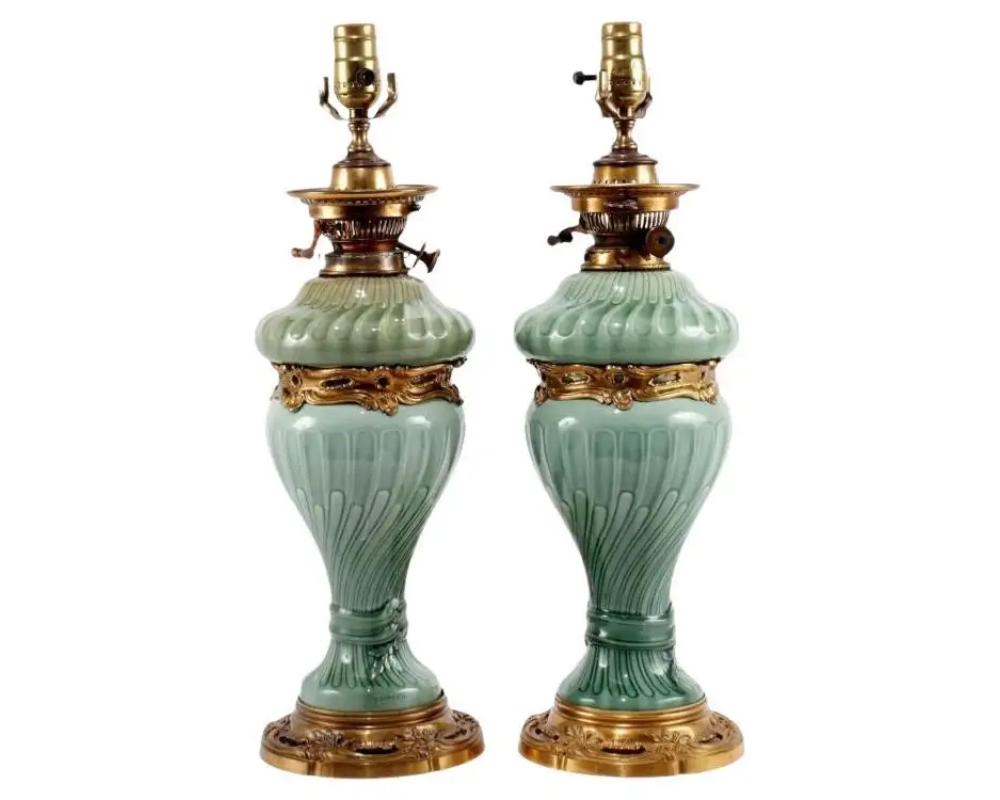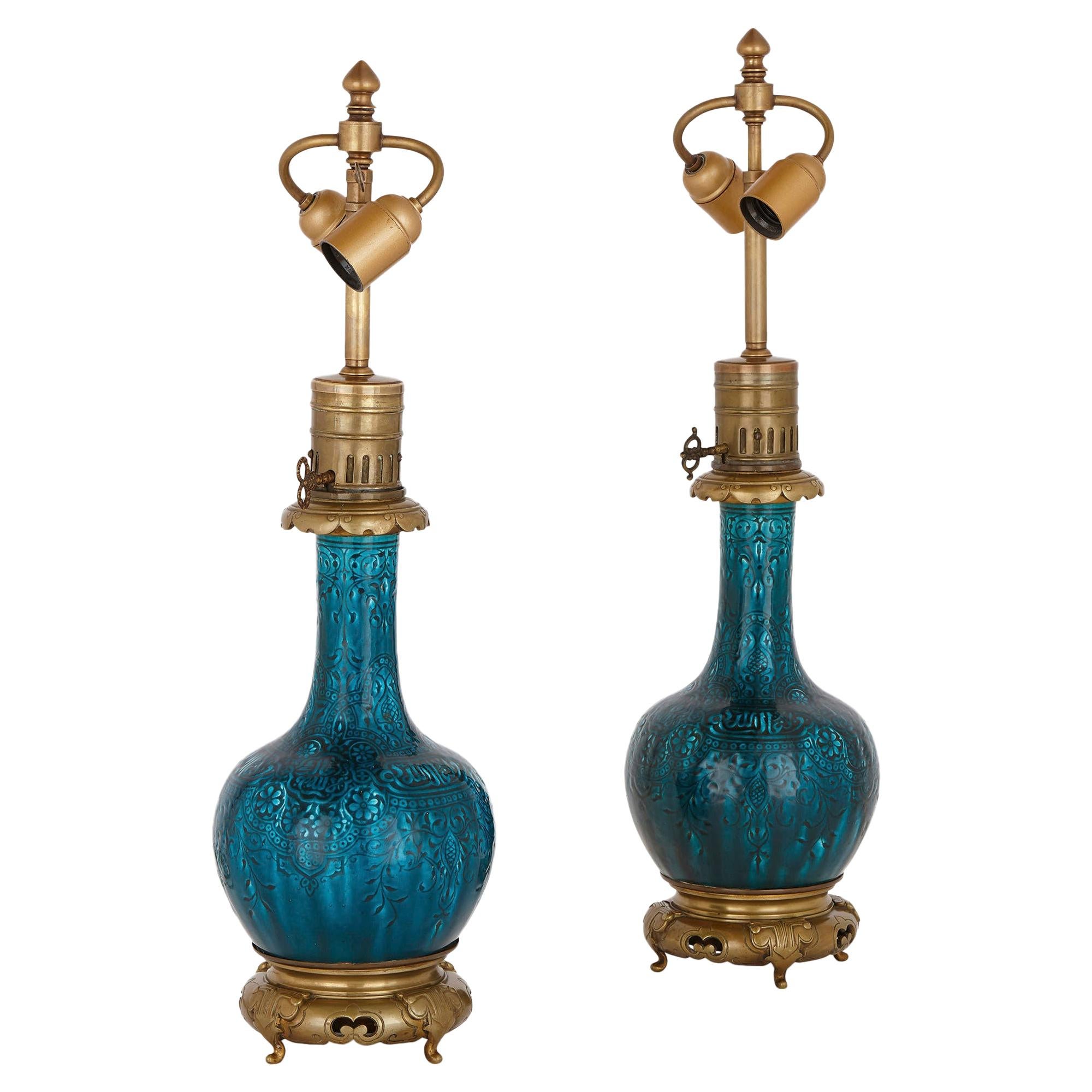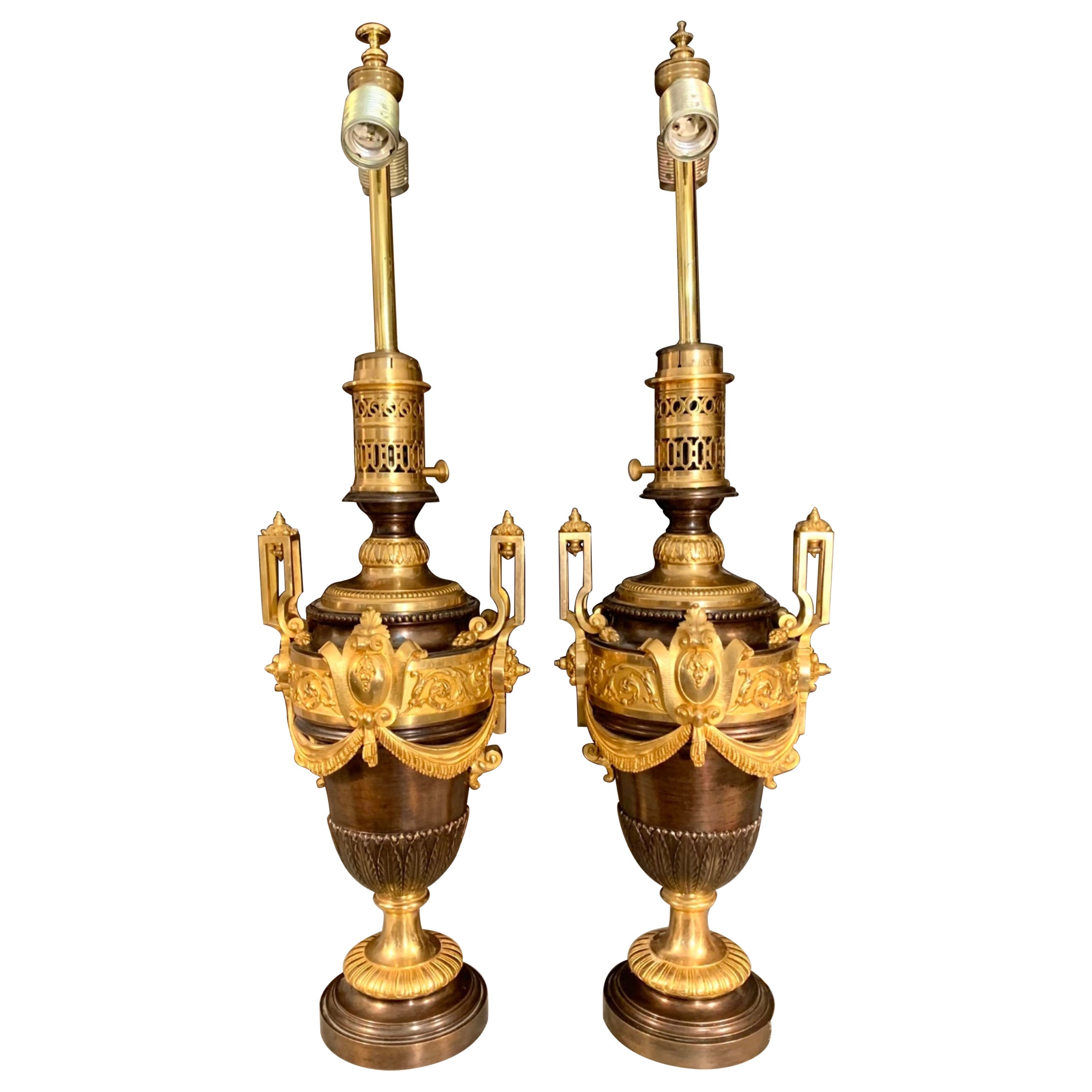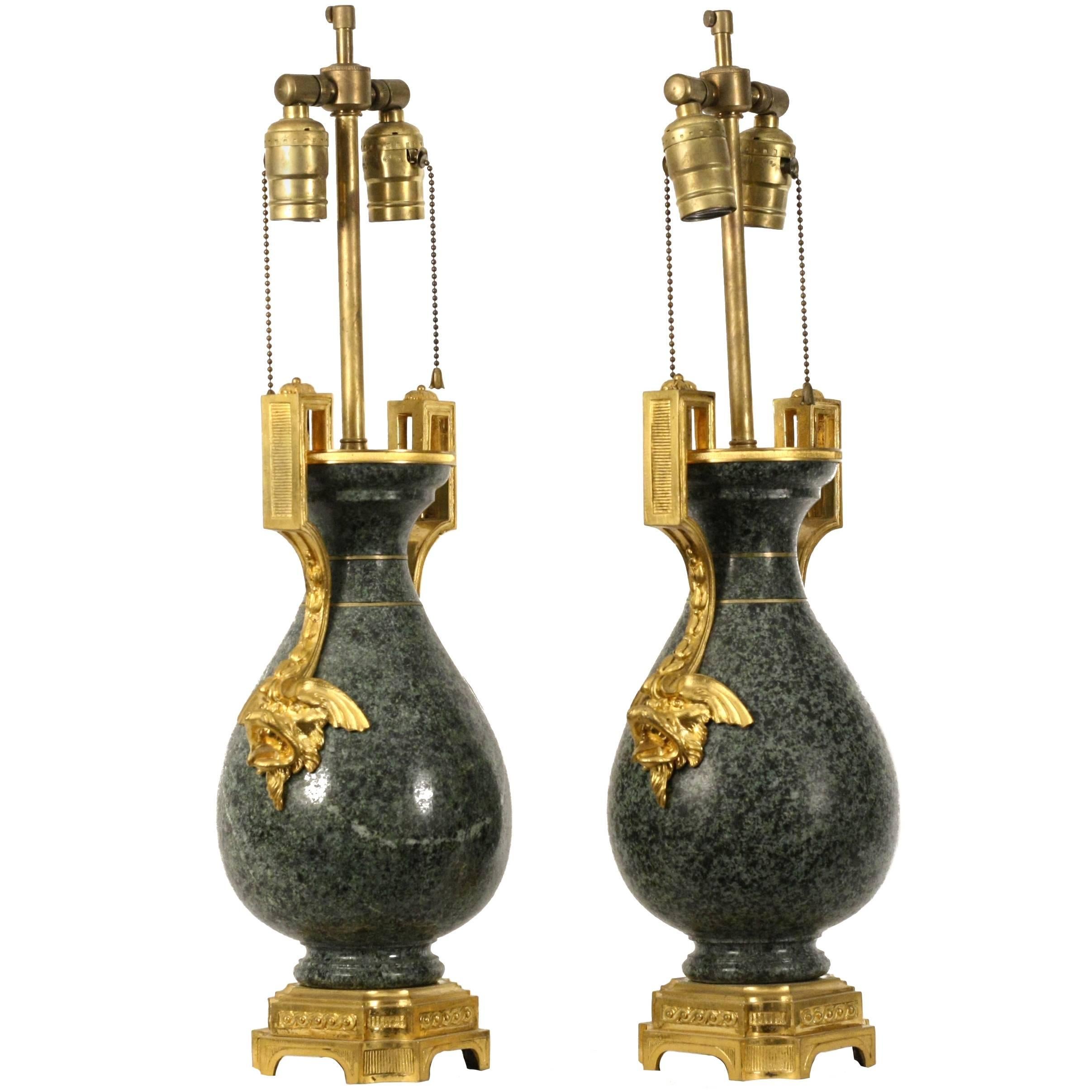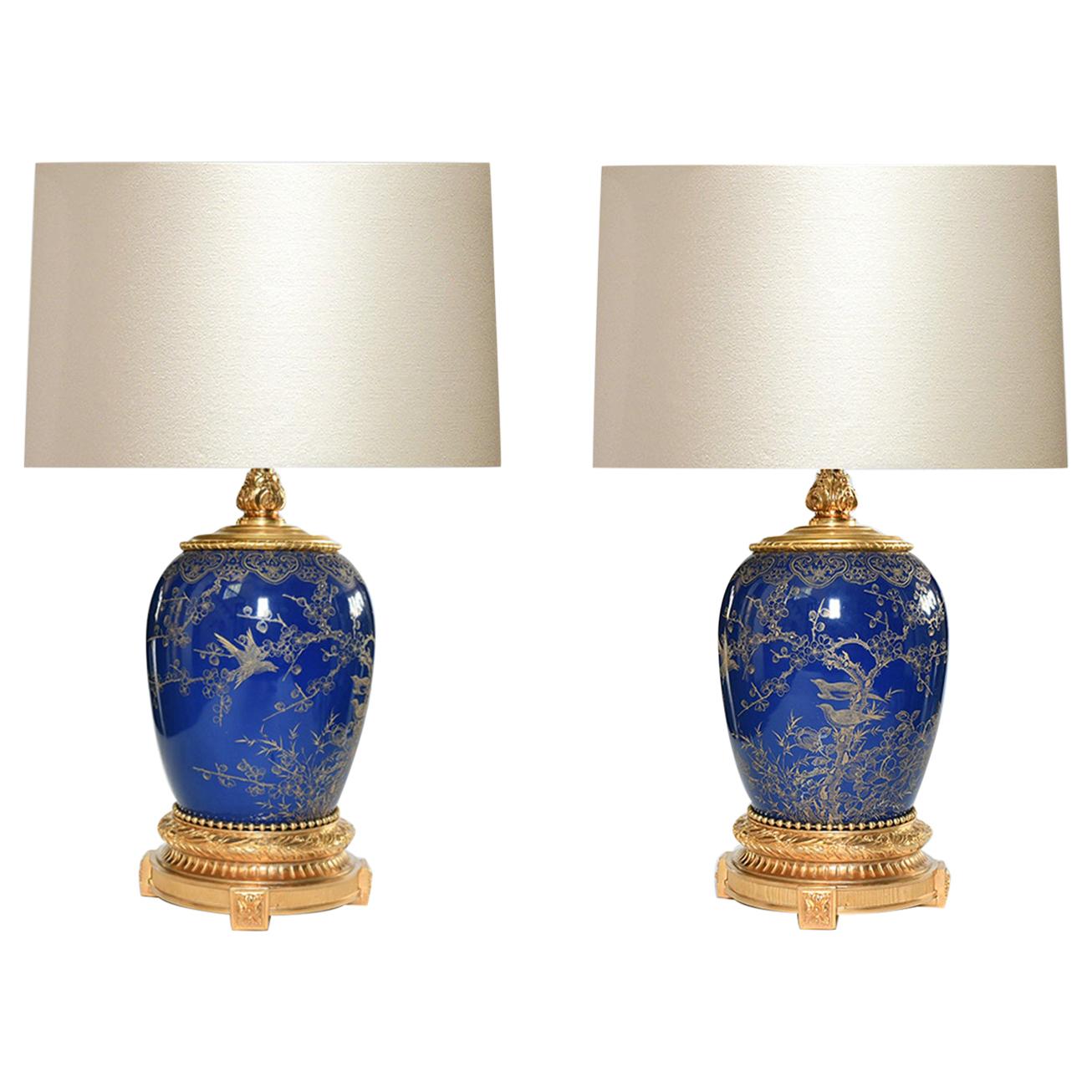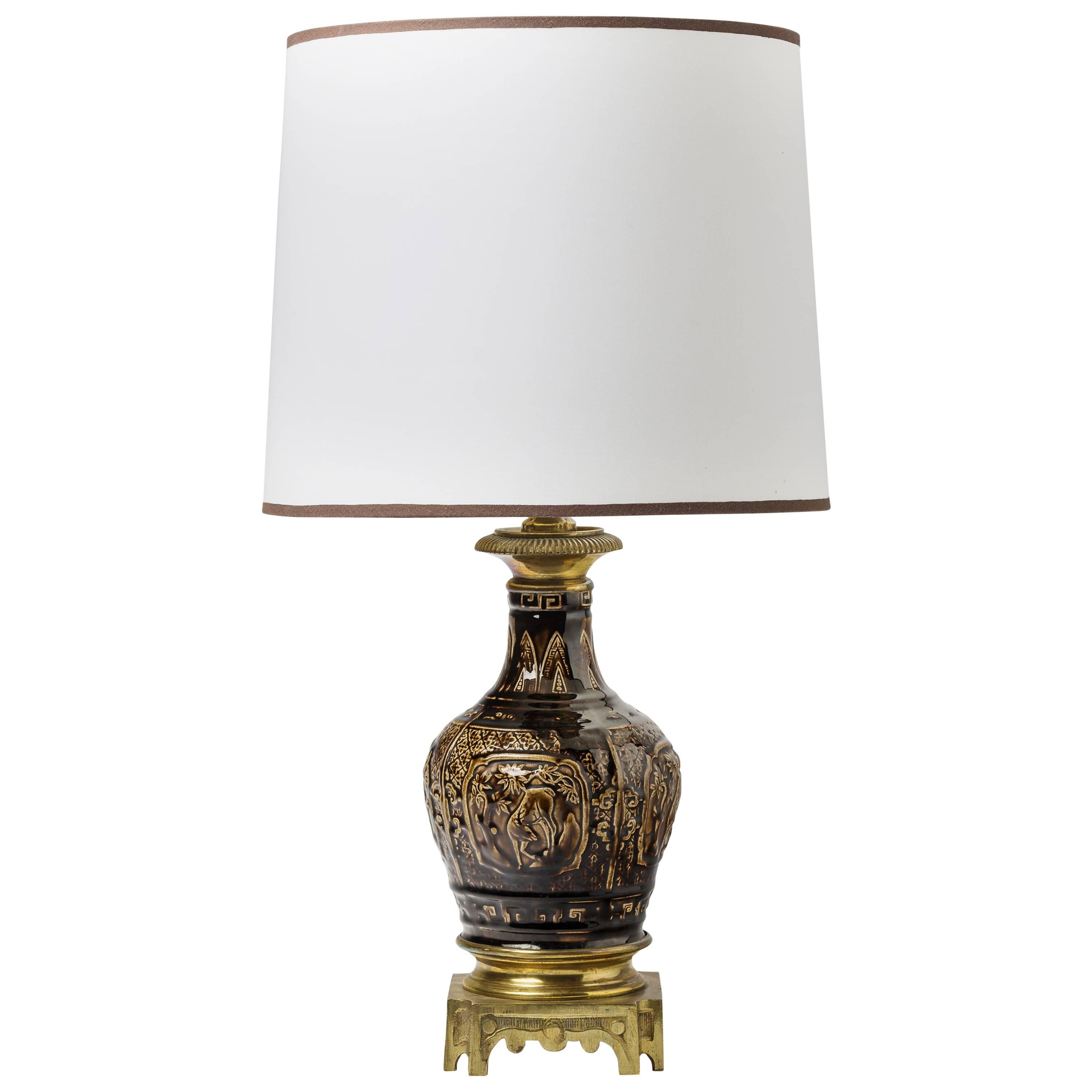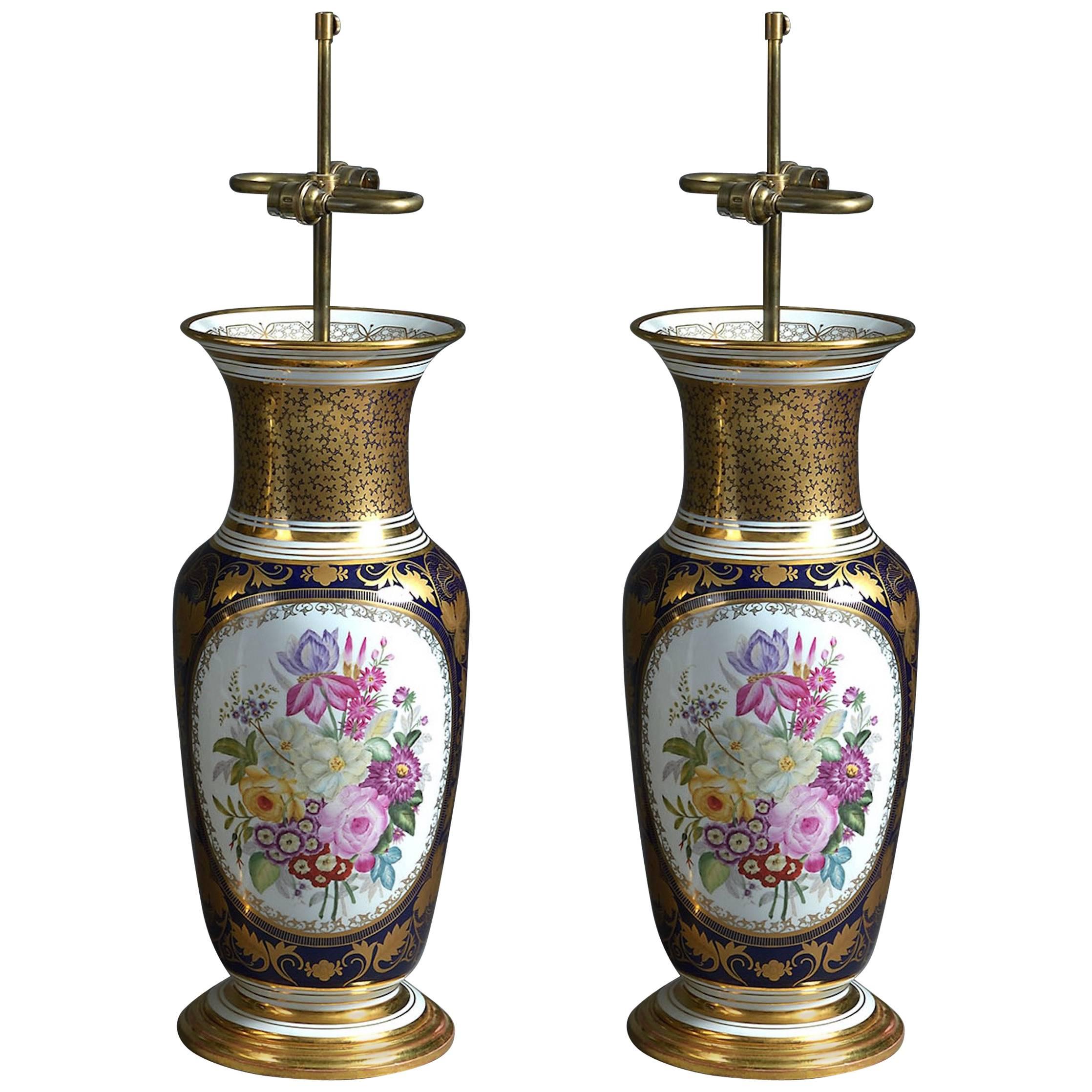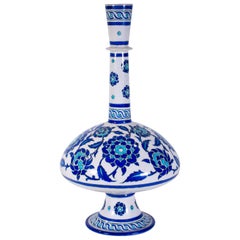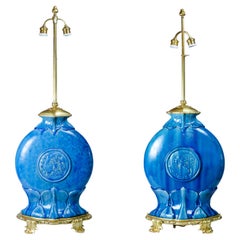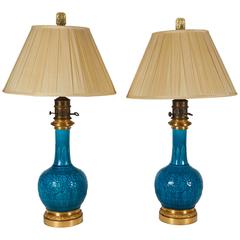
Pair of Blue Theodore Deck Porcelain and Ormolu-Mounted Vases/Lamps
View Similar Items
Want more images or videos?
Request additional images or videos from the seller
1 of 9
Pair of Blue Theodore Deck Porcelain and Ormolu-Mounted Vases/Lamps
About the Item
- Creator:Theodore Deck (Maker)
- Dimensions:Height: 30 in (76.2 cm)Width: 7 in (17.78 cm)Depth: 7 in (17.78 cm)
- Sold As:Set of 2
- Style:Aesthetic Movement (Of the Period)
- Materials and Techniques:
- Period:
- Date of Manufacture:1870
- Condition:
- Seller Location:New York, NY
- Reference Number:1stDibs: f91951511203508763fs
About the Seller
4.9
Platinum Seller
These expertly vetted sellers are 1stDibs' most experienced sellers and are rated highest by our customers.
Established in 1820
1stDibs seller since 2011
138 sales on 1stDibs
Typical response time: 1 hour
More From This SellerView All
- Large Theodore Deck Earthenware Bottle Form Vase in the Islamic/Iznik TasteBy Theodore DeckLocated in New York, NYA large and impressive Theodore Deck Earthenware bottle form vase in the Islamic/Iznik Taste, Impressed "TD" 1870 on the bottom. The narrow circular neck is decorated with dark blue,...Category
Antique 1870s French Islamic Vases
MaterialsPorcelain
- A Large French Ormolu Mounted Japanese Blue & White Porcelain Vase/LampBy Edouard LievreLocated in New York, NYAn Incredible and Quite Large 19th Century French Ormolu Mounted Japanese Blue and White Porcelain Vase Turned to Lamp, The moun...Category
Antique 19th Century French Japonisme Table Lamps
MaterialsBronze
- Pair of Antique French Empire Porcelain and Ormolu-Mounted LampsLocated in New York, NYPair of antique French Empire red porcelain and ormolu-mounted lamps, attributed to Sèvres. The porcelain bases of the lamps are decorated with ovals depicting bouquets of hand paint...Category
Antique 19th Century French Neoclassical Table Lamps
MaterialsOrmolu
- Pair of French "Bleu Pudre" Chinese Export Porcelain Ormolu-Mounted VasesLocated in New York, NYMagnificent pair of antique French "Bleu Pudre" Chinese Export porcelain ormolu-mounted vases. This exceptional pair of Regence style bleu pudre porcelain vases are beautifully handc...Category
Antique Mid-19th Century French Régence Vases
MaterialsBronze
- Pair of French Japonisme Ormolu Vases E. Lièvre, Executed by F. BarbedienneBy Edouard Lievre, Ferdinand BarbedienneLocated in New York, NYAn important and monumental pair of very fine 19th century French Japonisme/Orientalist ormolu vases designed by Edouard Lièvre and Executed by Ferdinand Barbedienne. Each body with an oval shape, finely sculpted in a floral design, fringed by orientalist style handles with cartouches, the neck surmounted by a circular pierced scrolling dragon frieze. Each vase resting on a group of four orientalist style jeweled elephant...Category
Antique 1870s French Japonisme Vases
MaterialsBronze
- Pair of French Louis XVI Style Ormolu Mounted Chinese Export Porcelain VasesLocated in New York, NYA monumental and quite important pair of antique French Louis XVI style ormolu-mounted Chinese export porcelain vases. This exceptional pair of Louis XVI style porcelain vases are be...Category
Antique Early 19th Century French Louis XVI Vases
MaterialsBronze
You May Also Like
- Pair of French Theodore Deck Ormolu-Mounted Celadon Porcelain LampsBy Theodore DeckLocated in New York, NYA Pair of French Theodore Deck ( 1823-1891) Ormolu-Mounted Celadon Porcelain Lamps, circa 1870. A very elegant pair of celadon green porcelain lamps in the Chinese taste, mounted ...Category
Antique 19th Century French Table Lamps
MaterialsOrmolu
- Pair of Gilt Bronze Mounted Faience Lamps by DeckBy Theodore Deck, Gagneau FrèresLocated in London, GBThese beautiful table lamps are by Théodore deck, one of the most important ceramicists of the 19th Century, and Gagneau Frères, a leading bronzier. Deck was the director of a presti...Category
Antique Late 19th Century French Vases
MaterialsOrmolu, Bronze
$15,534 / set - Pair of "Blue Glaze" Lamps Made by Theodore DeckBy Theodore DeckLocated in Ciudad Autónoma Buenos Aires, CPair of Blue Glaze ceramic table lamps, with bronze base and stem, made by Theodore Deck (1823-1891). Signed HT DECK, MADE IN FRANCE, F...Category
Antique 1880s French Art Nouveau Table Lamps
MaterialsBronze
$50,000 / set - Pair of French Ormolu-Mounted Blue-Ground Porcelain Vases Fitted as LampsLocated in New York, NYA fine quality pair of French Ormolu-Mounted Chinese Porcelain Vases mounted as lamps in mottled blue-ground glaze. Resting on square ormolu base with garland band and ormolu banded ...Category
Antique 19th Century French Chinoiserie Table Lamps
MaterialsBronze, Ormolu
- Pair of Gilt Bronze and Faience Lamps, Attributed to Théodore DeckBy Theodore DeckLocated in London, GBThese beautiful table lamps have been attributed to Joseph-Théodore Deck, one of the most important ceramicists of the 19th century. Deck was the director of a prestigious faience wo...Category
Antique Late 19th Century French Islamic Table Lamps
MaterialsBronze, Ormolu
- Pair of Porcelain Vases Ormolu-Mounted in Lamps by Gagneau Paris XIXth CenturyBy Gagneau ParisLocated in Saint-Ouen, FRPair of large Japanese Porcelain Cone Shape Vases with Imari decoration Important mounts in ormolu and gilded metal, the base decorated with a laurel wreath, the upper part of falling leaves and a frieze of knotted ribbon. The mounts signed Gagneau, 115 R. Lafayette. Circa 1860 With their original aluminium bulb cover and original gilding Vase it self Height 47 cm The Gagneau Company is one of the most famous lighting factories in Paris in the nine-teenth century, established in 1800 at 25 rue d'Enghien in Paris and later at 115 rue de Lafayette. She has participated in many exhibitions throughout this century. She began in 1819 with the Exposition des Produits de l'Industrie and later participated in the Universal Exhibitions where she was part of the jury in the category of art bronzes (class 25) at the Universal Exhibition in Paris in 1889. "Imari" was simply the trans-shipment port for Arita wares, from where they went to the for-eign trading outposts at Nagasaki. It was the kilns at Arita which formed the heart of the Japanese porcelain industry. Arita's kilns were set up in the 17th century, after kaolin was discovered in 1616. A popular legend attributes the discovery to an immigrant Korean potter, Yi Sam-Pyeong (1579–1655), although most historians consider this doubtful. After the discovery, some kilns began to produce revised Korean-style blue and white porcelains, known as Early Imari, or "Shoki-Imari". In the mid-17th century, there were also many Chinese refugees in northern Kyushu due to the turmoil in China, and it is said that one of them brought the overglaze enamel coloring technique to Arita. Thus Shoki-Imari developed into Ko-Kutani, Imari, and later Kakiemon, which are sometimes taken as a wider group of Imari wares. Ko-Kutani was produced around 1650 for both export and domestic market.Kutani Ware is characterized by vivid green, blue, purple, yellow and red colors in bold designs of landscapes and nature. Blue and white porcelain pieces continued to be produced and they are called Ai-Kutani. Ko-Kutani Imari for the export market usually adopted Chinese design structure such as kraak style, whereas Ai-Kutani for the domestic market were highly unique in design and are ac-cordingly valued very much among collectors. Ko-Kutani style evolved into Kakiemon-style Imari, which was produced for about 50 years around 1700. Kakiemon was characterized by crisp lines, and bright blue, red and green designs of dramatically stylized floral and bird scenes. Imari achieved its technical and aes-thetic peak in the Kakiemon style, and it dominated the European market. Blue and white Kakiemon is called Ai-Kakiemon. The Kakiemon style transformed into Kinrande in the 18th century, using underglaze blue and overglaze red and gold enamels, and later additional colors. Imari began to be exported to Europe when the Chinese kilns at Jingdezhen were damaged in the political chaos and the new Qing dynasty government halted trade in 1656–1684. Ex-ports to Europe were made through the Dutch East India Company, and in Europe the des-ignation "Imari porcelain" connotes Arita wares of mostly Kinrande Imari. Export of Imari to Europe stopped in mid-18th century when China resumed export to Europe, since Imari was not able to compete against Chinese products due to high labor costs. By that time, however, both Imari and Kakiemon styles were already so popular among Eu-ropeans that the Chinese export porcelain copied both, a type known as Chinese Imari. At the same time, European kilns, such as Meissen and English potteries such as Johnson Bros. and (Royal) Crown Derby, also imitated the Imari and Kakiemon styles. Export of Imari surged again in late 19th century (Meiji era) when Japonism flourished in Europe.Thus, in the western world today, two kinds of true Japanese Imari can...Category
Antique 1880s French Japonisme Table Lamps
MaterialsBronze
Recently Viewed
View AllMore Ways To Browse
French Porcelain 18 Th
18 Th Century Lighting
18 Th Century Table Lamps
18 Th Century Porcelain
Mid Century Modern Wood Carved Lamp
Modern Nightstand Lighting
China Carved Lamp
Coastal Entry Table
Table Lamps 1940s And 1950s
White Porcelain Lamp Bases
1920s Desk Lamp
Lamp Semi Precious
Antique Early Electric
Repurposed Lamp
Cord Phone
Black Lamp Shades For Small Table Lamps
Double Brass Sweden
Portable Lamp Flos

